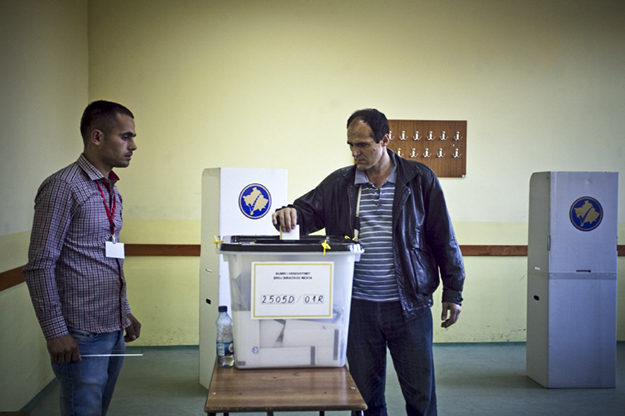Since the resignation of Prime Minister Ramush Haradinaj on July 19, citizens have lived with the pre-election fever of the political scene. Although officially the decision has not yet been taken to go to snap elections, de facto everyone agrees that this is where we’re heading within weeks.
As a result, even before the official announcement, every political party is in full-blown pre-election modus operandi.
Classic public relations exercises, social media activism by political leaders and their “cybernetic soldiers,” moralizations regarding negative phenomena that exist in our society, attempts to take credit for processes and decisions that are perceived as positive, accusations against one another for those that are perceived as negative, discourse with hints of political promises and calculations about potential coalitions are just some of the features that show Kosovo is nearing its next election cycle.
Initial confusion
Harridaj’s resignation was followed by a period of official and public confusion as to whether his resignation implied the fall of the government — and subsequent elections — or leaves space for a new mandate. In fact, from the first few days after resigning, Haradinaj continued to call meetings of the government cabinet and went to work every day.
But for many political analysts, this was wrong because from the moment of resignation, the country is without a government. According to Enver Hasani, former head of the Constitutional Court, when a prime minister resigns, their activity ends there and they cannot be considered a “resigning minister” just like a government can’t be considered a “resigning government.”
Article 95.5 of Kosovo’s Constitution explains the steps that must be followed after the resignation of the prime minister, stating: “If the Prime Minister resigns or for any other reason the post becomes vacant, the Government ceases and the President of the Republic of Kosovo appoints a new candidate in consultation with the majority party or coalition that has won the majority in the Assembly to establish the Government.”

Despite resigning on July 19, Ramush Haradinaj has continued to lead the government, with analysts suggesting that this should not be the case. Photo: Atdhe Mulla / K2.0.
Resigning Prime Minister Ramush Haradinaj addressed the Constitutional Court with a request to interpret his resignation and to define the competences of the functioning of the government after this act. Haradinaj wrote on his Facebook page that the point of this request was not only to get an explanation of the legal situation that had been created after his resignation and to evade an institutional vacuum, but also to clarify the issue for similar situations in the future.
On July 30, President Thaçi started to consult with political parties regarding the next steps to be taken.
But with all the constitutional confusion over whether the president should mandate a new prime minister, go to elections, or whether we have a concrete case of a “resigning government,” from the start it has been clear that all political parties are ready and willing to go to snap elections.
Toward elections
With the passing of days, the situation has begun to become clearer, and the will of political parties to head to elections looks set to triumph above constitutional obscurities. In early August, the Presidency of the Kosovo Assembly set August 22 as the date when deputies will have the chance to dissolve this legislature by voting a motion of no-confidence in the government.
Such an act would open the way to solve the deadlock because it would oblige the president to announce snap elections no later than 45 days after the Assembly’s dissolution.
There are a number of potential reasons why the Assembly has not been dissolved already. According to the head of NISMA’s parliamentary group, the primary reason is that the European Union had suggested a delay in order to put in place an election monitoring team.

Deputies are widely expected to vote through a no-confidence motion in the government on Thursday, August 22, which will trigger snap elections within 45 days. Photo: Atdhe Mulla / K2.0.
Another reason is that all political parties — excluding AAK which seems to have grown in popularity as a result of Haradinaj’s resignation, which has been perceived by many as a “heroic gesture” — are interested in prolonging the election as much as possible, namely to delay it until the autumn. They have been caught unprepared by the idea of elections, since it came particularly at a time when politicians were planning for holidays. In short, the parties need more time to mobilize their electorates.
Thirdly, had elections been announced earlier, the campaign would have had to start in August — a month of summer, vacations and entertainment — and the parties feared that citizens would be irritated if they heard electoral promises during their vacation time.
As such, if deputies do indeed vote to dissolve the Assembly on August 22, then elections would most likely be held on either the last Sunday of September, or the first Sunday of October.
Political calculations
The 2017 parliamentary election appeared to provide an important lesson to political parties: Avoid large pre-election coalitions.
Attempting to “game” the election system after a Constitutional Court ruling in 2014 effectively attributed pre-election coalitions more weight in government formation than post-election pacts, PDK and LDK both made large pre-election coalitions in 2017 that ultimately seemed to cost them.
PDK lost many votes within the PAN — PDK-AAK-NISMA — coalition because its base was demobilized for two reasons: firstly, because there was little will to work for a prime ministerial candidate such as Haradinaj, for whom many had hard feelings from the past; secondly, with PDK required to give up a large part of its election list to candidates from AAK and NISMA, potential PDK candidates who were excluded from the list did not mobilize their supporters.

All parties are currently weighing up their political calculation on how best to approach the anticipated elections. Photo: Atdhe Mulla / K2.0.
The lessons learned from PDK’s 2017 suffering in particular may well lead political parties to be more sceptical of pre-election coalitions this time around.
However, on August 13, there were reports of a meeting between LDK leader, Isa Mustafa, and Vetëvendosje (VV) leader, Albin Kurti. The soft language used by the two former political rivals surprised many, however neither stated whether they had agreed upon a pre-election coalition.
An LDK-VV coalition has been much discussed, but the chances of this becoming a reality still seem somewhat slim.

